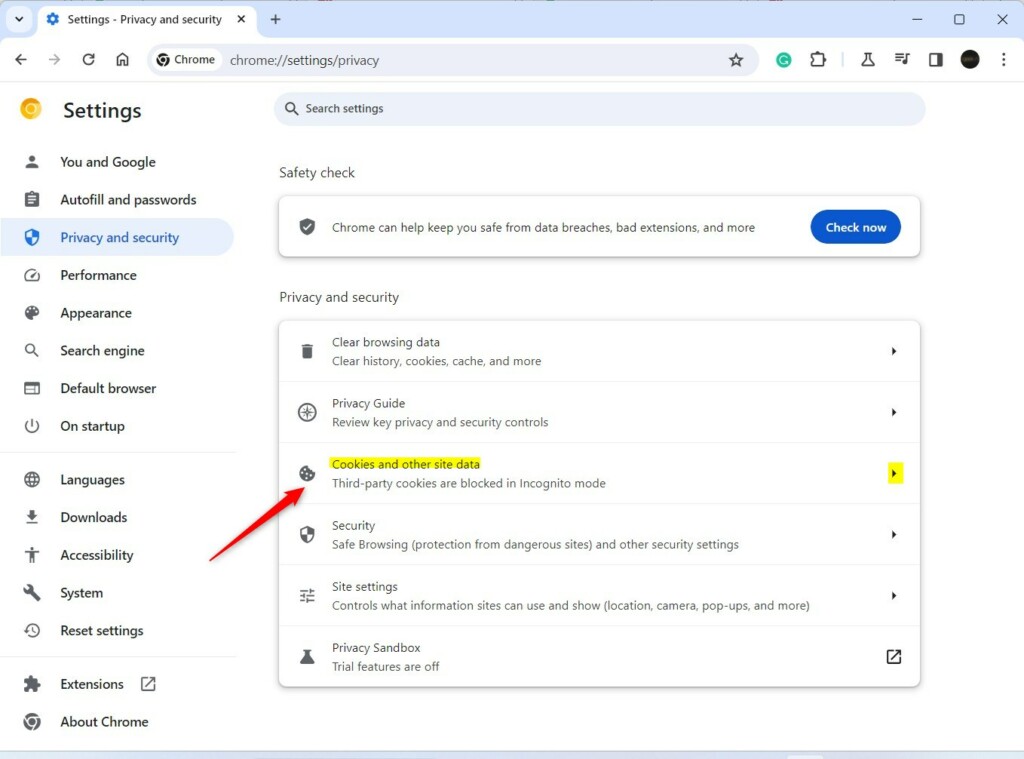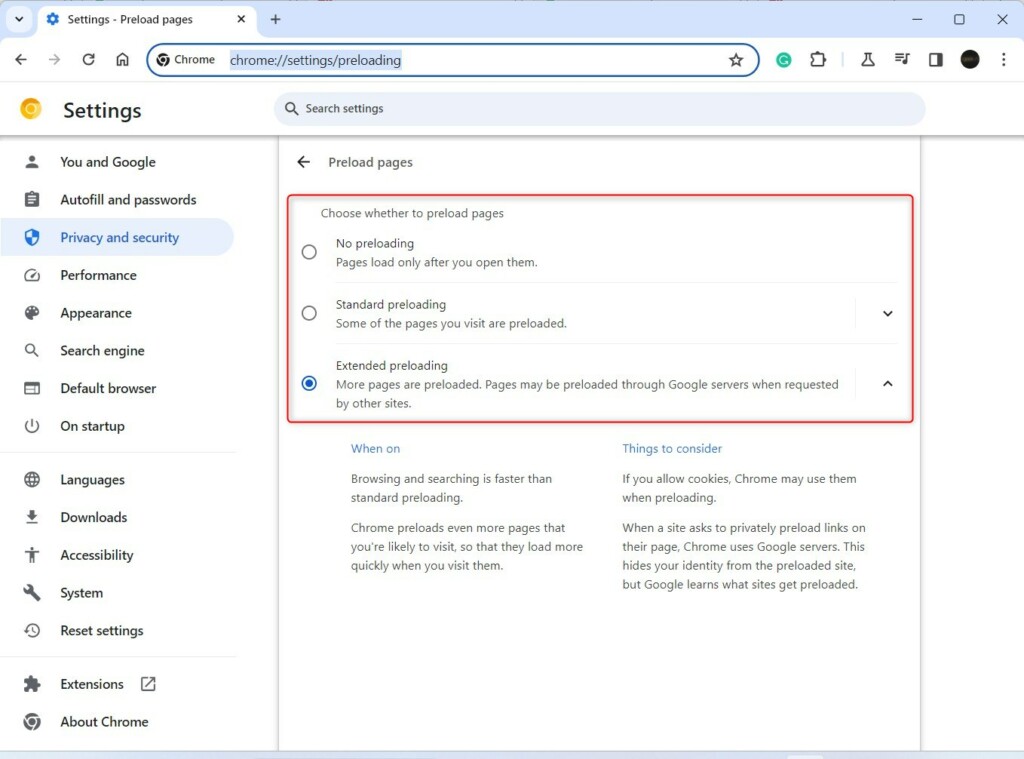This article explains how to turn “Preload pages” On or Off in the Google Chrome web browser.
Google Chrome is a cross-platform web browser developed by Google. It and Microsoft Edge share the same codebase. They are practically identical in basic functionalities, using browsing activities, including history and other browsing data, to provide personalized ads, search, shopping, and news.
Your Chrome browser has a “Preloading” feature that makes browsing and searching faster by preloading pages it thinks you might visit.
It uses browser cookies stored in your browser. Cookies are files created by websites you visit. By saving information about your visit, the “Preload pages” feature will use that data to predict the next site you want to visit.
There are two types of preloading in Chrome:
- Standard preloading – Some of the pages you visit are preloaded.
- Extended preloading – More pages are preloaded. Pages may be preloaded through Google servers when requested by other sites.
Turning preload pages on or off in Google Chrome can significantly impact browsing speed and data usage. With the preload pages feature turned on, Chrome will use cookies and browsing history to predict the next page you are likely to visit and preload it in the background.
This can make browsing faster since the page is already loaded when you click the link. However, it can also use extra data and resources, which may not be desirable for some users. Additionally, some users may prefer not to have their browsing history and cookies used to preload pages.
Turning off preload pages can help maintain privacy and reduce data usage but at the cost of potentially slower browsing.
Enable or disable “Preload pages” in Chrome
As mentioned above, users can turn “Preload pages” in Google Chrome to make browsing and searching faster by preloading pages Chrome thinks you might visit.
Here’s how to turn it on or off.
First, open the Google Chrome browser.
Then click on the Customize and Control (3 vertical dots button) in the top right corner and select Settings.

On the Settings page on the left panel, click the Privacy and security link on the left.

On the right, select the “Cookies and other data” tile on the Privacy and security page to expand it.

Next, click the Preload pages tile to expand it. Users can also use the URL below in the address bar to go directly to the Preloading page in Chrome.
chrome://settings/preloading

On the “Preloading” page, select one of the options to choose whether to preload pages in Chrome.
- No preloading
- Standard preloading
- Extended preloading

Make your choice and save your settings. Then, exit Chrome.
That should do it!
Source:
Conclusion:
- The article provided detailed instructions on how to turn “Preload pages” on or off in Google Chrome, catering to users’ preferences and needs.
- By understanding the implications of enabling or disabling this feature, users can make an informed decision about their browsing experience, privacy, and data usage.
- Accessible visual aids, including screenshots and direct URL links, complemented the step-by-step guide, enhancing the overall user experience.
- Users were encouraged to utilize the comments section for further queries or contributions, promoting engagement and continuous improvement within the community.

Leave a Reply